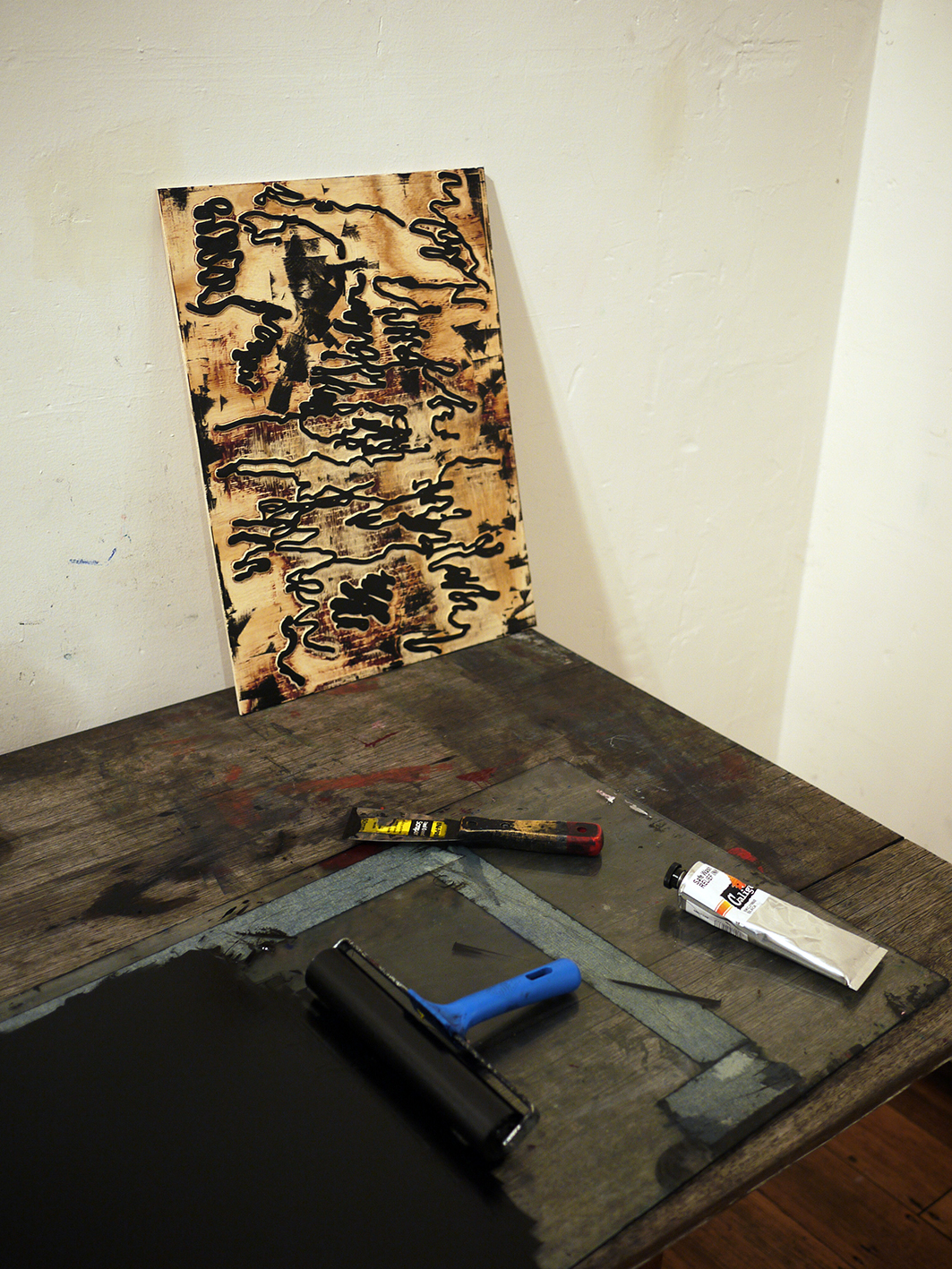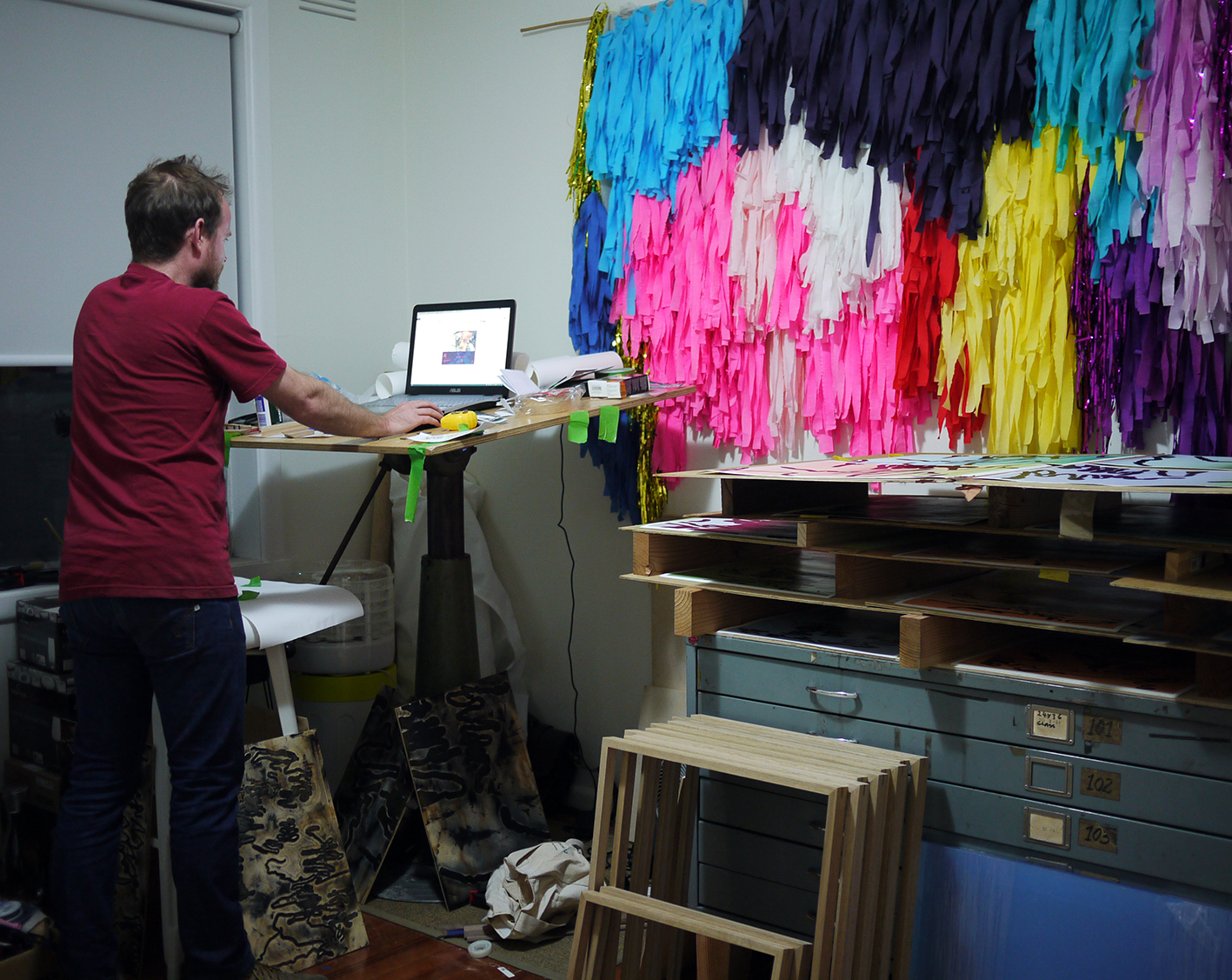Studio Visit with Ben Foster
I've been catching up with Ben Foster over the past few months over the phone and via email to try and coordinate our up-coming exhibition Native. Ben exhibited with us back in 2014 for a solo show titled Altered Substrate. Since then Ben's works has progressed into some new mediums. He still uses aerosol paint but has incorporated a lot more technology into the mix. I would strongly recommend you check out his Instagram feed @moreisness and check out some of the videos of the CNC cutting process! This body of work features CNC cut woodblock prints. I asked Ben about his new series and the process behind it.
Tell us about your background. How did you get into art? I've always been making art in some form or another. Growing up on a small farm in Tamworth we always had plenty of inspiration and opportunity to be making and creating art, and things. It definitely has shaped my focus on making art that references the natural world.
It wasn't until I met a few people in Newcastle that I got into aerosol art, stencils and the emerging street art scene, which was dominated at first by pop culture references and wry cultural observations. Everybody wanted to be Banksy in those days, and it seemed that gas masks and apocalyptic motifs would never go away. My work moved into more abstracted and stylised representations and I often used repeated patterns in large stencilled works, utilising bold colours and geometries. The last couple of years I've moved further into abstraction and natural patterning, and I'm exploring the role of technology in my process.
Where do you get your design ideas? My ideas typically have a long gestation period, I have concepts in storage that are years old and I still plan on coming back to at some point. I find inspiration in nature, travel, technology, sunsets, everyday moments of isness.
Talk us through your artmaking process. This project, like many others of mine began with a simple idea of recreating the scribbly gum marks made by the scribbly gum moth (ogmograptis scribula). I toyed around with the idea of creating individual stencils but soon realised the scope of what I wanted to achieve meant that would be a gargantuan task.
I've been experimenting with parametric design for a while now in my job, using it to optimise building shapes for low energy consumption and high quality daylight. The tools used are incredibly powerful and I wanted to find a way to incorporate the power of algorithms and digital tech in my work.
I was initially drawn to the use of digitised scribbles being cut with a laser cutter, but further investigation drew me towards using a CNC machine. CNC is Computerised Numerical Control, and it's really a robot controlled router following 3d coordinates to carve a path, removing material as it follows. This parallel with the moth burrowing along a path to create the images on bark was enough for me to really pursue the idea, and so the carved scribbles on wood panels began.
While the project was still entirely in the digital realm, just vectors on a screen, I would visualise the finished works each night as I went to sleep. I always find the boundary between awake and asleep to be amazingly useful to explore visual concepts and plan my work. The hard part is remembering any breakthroughs! Before a single curve was carved I had a target to work towards, and the final works are largely true to that vision.
There are always many moments of inspiration that occur during the creation process that can drastically change the final outcomes. One of those in this case, minutes before setting the CNC to carve the panels, resulted in a previously unthought of direction, integral to the final form of the large mosaic works. I love the way that tweaks and happy accidents contribute to works along the way.
I make all of my own frames, so that process takes place alongside the art making, sometimes taking even longer! It's a different set of skills and methods that I enjoy using, so the whole package is a reflection of my love of the whole production process.
Despite all the visualising and planning done, my nature and the fact that I also work full time means that as always, this one came down to the wire... Some things don't change. I find the intense push to finish a lot in a little time is conducive to flow, that happy headspace where everything works and your focus is unbroken. It's very enjoyable.
Describe your work space to us? My work space for this project has been all over the place. I'm lucky enough to have a small workspace in my house with loads of light. Using spray paint means I need to be outside under our patio, at the whim of the Melbourne weather, squalls and rain. One day I'd love a spray booth but I'll have to wait for that one!
This project has involved me using my own space plus the spaces of two other artists. Without the help of Jasper Killick, an artist who uses CNC machining in his work, I would have struggled to find a way to experiment with CNC technology to create these works. I also enlisted the help of Alannah at Merri Creek Studio to set up my print run on her press.
How would you describe your aesthetic? This is a difficult one for me! This merge of traditional printing techniques with modern fabrication technology, recreating the marks of insects made on trees... abstracted but also definitely immediately recognisable. I don't really know how to describe it!












